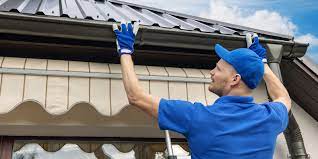
Roof inspection
Roof inspection is the process of evaluating the condition, integrity, and overall health of a roof. It involves a thorough assessment of various components and aspects of the roof to identify any existing or potential issues, determine its remaining lifespan, and provide recommendations for necessary repairs or maintenance.
Here are the key aspects typically examined during a roof inspection:
- Exterior Evaluation: The exterior of the roof is inspected to check for signs of damage or wear. This includes examining the condition of the roofing materials (shingles, tiles, metal panels, etc.) for cracks, curling, missing pieces, or excessive granule loss. The inspector also looks for any visible damage, such as dents or corrosion on metal components.
- Roofing System Integrity: The overall integrity of the roofing system is assessed. This involves examining the condition of the underlayment, flashings, and sealants to ensure they are in good shape and properly installed. The inspector checks for signs of water intrusion, leaks, or weak points that may compromise the roof's performance.
- Structural Inspection: The structural components supporting the roof, such as trusses, rafters, and decking, are evaluated for signs of damage, rot, sagging, or inadequate support. These inspections are crucial to ensure the roof's stability and safety.
- Ventilation Assessment: The inspector checks the ventilation system of the roof to ensure proper airflow and ventilation within the attic space. Inadequate ventilation can lead to moisture buildup, which can cause mold growth, damage to the roof deck, and reduced energy efficiency.
- Gutters and Drainage: The gutters, downspouts, and other drainage components are examined to ensure they are clear of debris, properly attached, and effectively directing water away from the roof and foundation of the building.
- Interior Inspection: In some cases, the interior of the building, particularly the attic, may be assessed to look for signs of water leaks, mold growth, insulation issues, or other indications of roof-related problems.
- Documentation and Report: Throughout the inspection, detailed notes, photographs, and measurements may be taken to document the findings. The inspector then compiles a comprehensive report that includes a summary of the roof's condition, identified issues, recommended repairs or maintenance, and an estimate of remaining lifespan.
Regular roof inspections are essential for proactive maintenance and early detection of potential problems. They help identify issues before they escalate, extend the lifespan of the roof, and minimize the risk of costly damage to the property. It is recommended to have professional roof inspections performed by experienced roofing contractors who have the expertise and knowledge to conduct a thorough evaluation and provide accurate recommendations.